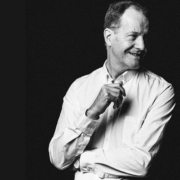Return to the Present Using Mindfulness
By: J.H. Venter
As a clinical psychologist, I often work with clients who struggle with anxiety, depression, and other mental health concerns, and one area they find challenging is to be in the present.
The more we spend time in the ‘fantasising future’ or the ‘ruminating past’, the harder it is to return to the present and be in the best position to deal with life’s challenges.
Fantasising Future
The fantasising future is a place in our mind where we try to prepare for the worst. We think about what might go wrong and try and prepare ourselves accordingly, however it often draws us into loops of ‘what ifs’. For example,
- ‘What could go wrong in the future?’
- ‘What if I am exposed as flawed or a fraud?’
- ‘What if I am not good enough?’
These ‘what if’ loops which were supposed to protect us from future mishaps actually end up disabling us and leaving us in a place of anxiety.
Ruminating Past
The ruminating past is another place in our mind where we get stuck in our thoughts and revisit the past to imagine different outcomes. We spend more time with ‘I should have’, ‘I would have’, and ‘I could have’ thoughts. These often end up resulting in thoughts like, ‘If I were good enough, this would not have happened’. These all lead to low mood and despair.
Identifying the triggers that lead you to fantasise about the future and ruminate about the past is essential. Then, when you notice yourself getting caught up in these thoughts, try and redirect your attention to the present moment.
Use Mindfulness to Be More Present
One of the most effective tools I have found to help clients with redirecting attention to being present is mindfulness.
Mindfulness is paying attention to your thoughts, feelings, and surroundings without judgment, focusing on the present moment, and letting go of worries about the past or future. When we are mindful, we can be more aware of our thoughts and emotions and choose how to respond to them.
One of the most potent aspects of mindfulness is that it can be practised anywhere, at any time, which means that you don’t need any special equipment or training to be mindful. All you need is a willingness to be present in the moment.
Tips for Practising Mindfulness in Daily Life
- Start small. You don’t have to meditate for an hour to be mindful. Start with a few minutes each day and gradually build up your practice.
- Focus on your breath. One of the simplest ways to be mindful is to focus on your breath. Take a few deep breaths and notice the sensation of the air moving in and out of your body.
- Use your senses. Another way to be mindful is to use your senses. Take a few moments to notice what you see, hear, smell, taste, and feel.
- Be non-judgmental. When you are mindful, try to let go of judgments and observe your thoughts and feelings without getting caught up in them.
- Practice regularly. Like any skill, mindfulness takes practice. So try incorporating mindfulness into your daily routine, whether during your morning coffee or evening walk.
Practising mindfulness teaches you to be more present in the moment and better cope with life’s ups and downs. If you are struggling with anxiety, depression, or other mental health concerns, I encourage you to try mindfulness.
Finally, remember that being present takes practice, so be patient with yourself. As you consciously try to be more present, you’ll find that it becomes easier over time. With practice, you can develop the ability to stay focused on the present moment, which can help you feel more grounded, centred, and better able to cope with life’s challenges.
Article supplied with thanks to The Centre for Effective Living.
Feature image: Photo by Jametlene Reskp on Unsplash










